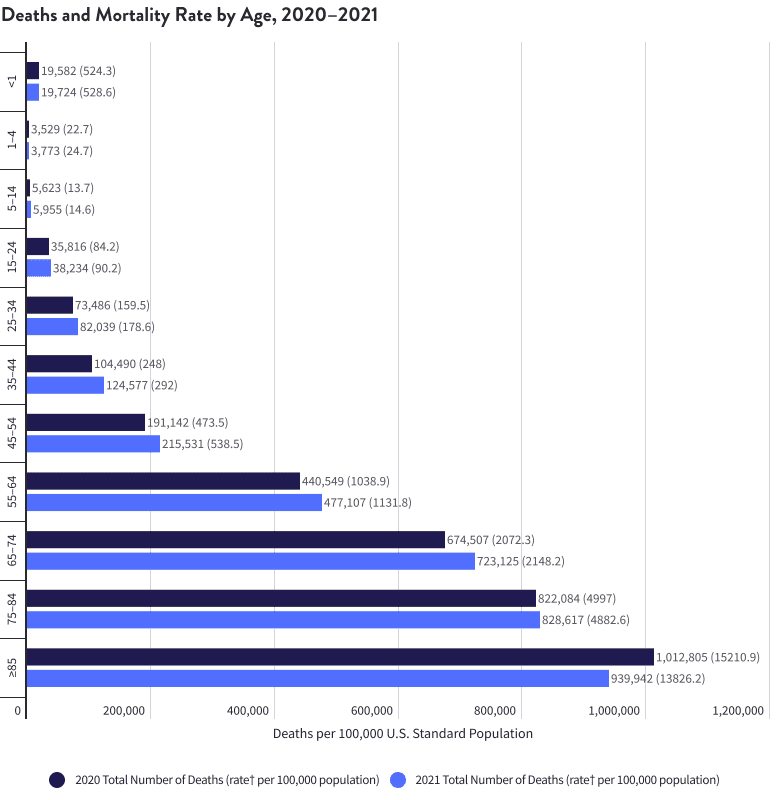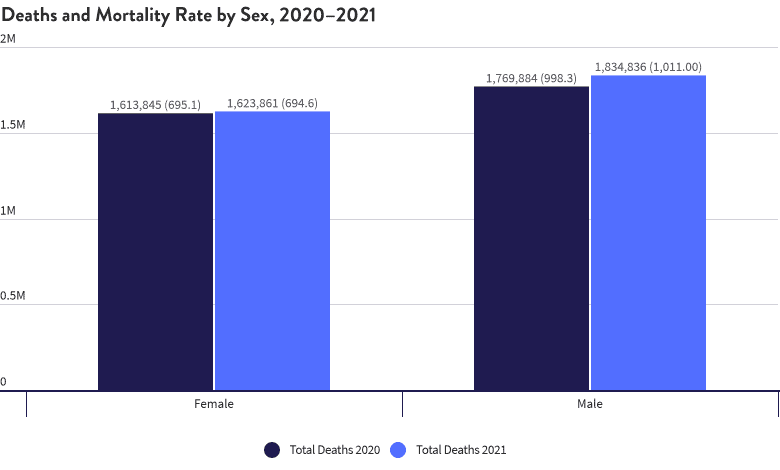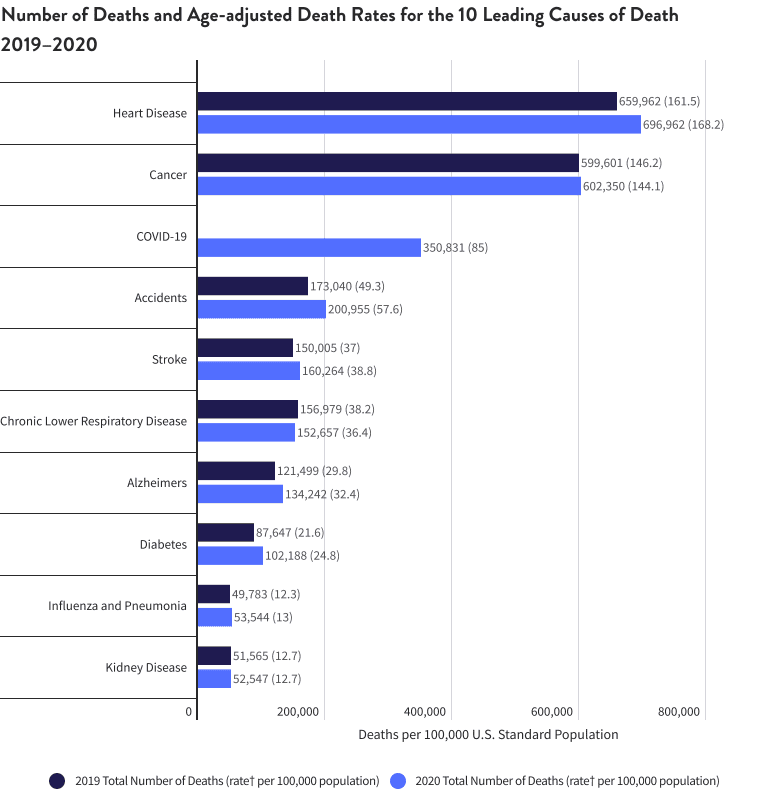In 2021, the U.S. saw 3,458,697 deaths, an increase of 75,000 or 0.7% in mortality rate from 2020, according to the Centers for Disease Control and Prevention (CDC). Heart disease and cancer remain the top two causes of death with COVID-19 as the third leading cause in 2021. Several factors such as age, sex, race and ethnicity tend to play a factor in life expectancy.
Mortality and morbidity, though related, are not synonymous. Mortality rate refers to the number of lives lost during a defined period among a specific group of people. The mortality rate can also indicate the number of deaths from a particular cause or event. Morbidity, on the other hand, refers to the condition suffered by a patient.























